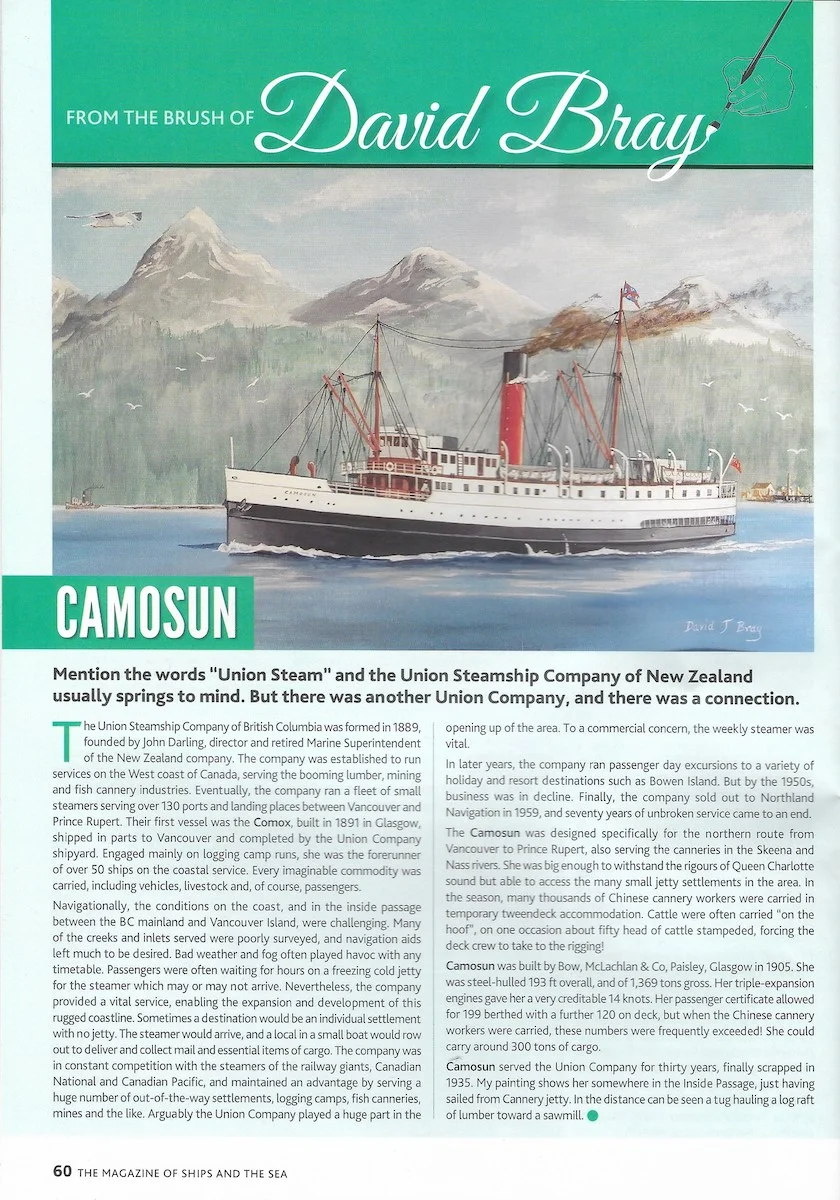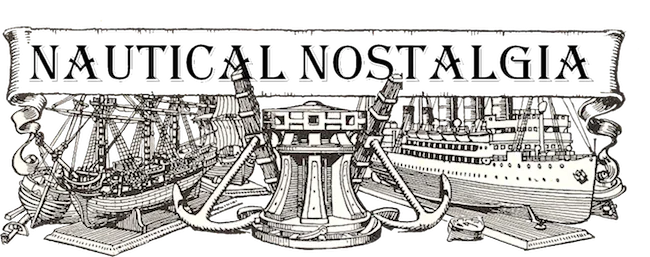From the brush of David Bray


Sea Breezes issue: November 2022
Mention the words “Union Steam” and the Union Steamship Company of New Zealand usually springs to mind. But, there was another Union Company, and there was a connection.
The Union Steamship Company of British Columbia was formed in 1889, founded by John Darling, director and retired Marine Superintendent of the New Zealand company. The company was established to run services on the West coast of Canada, serving the booming lumber, mining and fish cannery industries. Eventually the company ran a fleet of small steamers serving over 130 ports and landing places between Vancouver and Prince Rupert. Their first vessel was the “Comox”, built in 1891 in Glasgow, shipped in parts to Vancouver and completed by the Union Company shipyard. Engaged mainly on logging camp runs, she was the forerunner of over 50 ships on the coastal service. Every imaginable commodity was carried, including vehicles, livestock and, of course, passengers.
Navigationally, the conditions on the coast, and in the inside passage between the BC mainland and Vancouver Island, were challenging. Many of the creeks and inlets served were poorly surveyed, and navigation aids left much to be desired. Bad weather and fog often played havoc with any timetable. Passengers were often waiting for hours on a freezing cold jetty for the steamer which may or may not arrive. Nevertheless, the company provided a vital service, enabling the expansion and development of this rugged coastline. Sometimes a destination would be an individual settlement with no jetty. The steamer would arrive, and a local in a small boat would row out to deliver and collect mail and essential items of cargo. The company was in constant competition with the steamers of the railway giants, Canadian National and Canadian Pacific, and maintained an advantage by serving a huge number of out-of-the-way settlements, logging camps, fish canneries, mines and the like. Arguably the Union Company played a huge part in the opening up of the area. To a commercial concern, the weekly steamer was vital.
In later years, the company ran passenger day excursions to a variety of holiday and resort destinations such as Bowen Island. But by the 1950s, business was in decline. Finally, the company sold out to Northland Navigation in 1959, and seventy years of unbroken service came to an end.
The “Camosun” was designed specifically for the northern route from Vancouver to Prince Rupert, also serving the canneries in the Skeena and Nass rivers. She was big enough to withstand the rigours of Queen Charlotte sound, but able to access the many small jetty settlements in the area. In the season, many thousands of Chinese cannery workers were carried in temporary tweendeck accommodation. Cattle were often carried “on the hoof”, on one occasion about fifty head of cattle stampeded, forcing the deck crew to take to the rigging!
” Camosun” built by Bow, McLachlan & Co, Paisley, Glasgow in 1905. She was steel-hulled 193 ft. overall, and of 1369 tons gross. Her triple -expansion engines gave her a very creditable 14 knots. Her passenger certificate allowed for 199 berthed with a further 120 on deck, but when the Chinese cannery workers were carried, these numbers were frequently exceeded! She could carry around 300 tons of cargo.
“Camosun” served the Union Company for thirty years, finally scrapped in 1935. My picture shows her somewhere in the Inside Passage, just having sailed from cannery jetty. In the distance can be seen a tug hauling a log raft of lumber toward a sawmill.
This article, and others, follow a series which Sea Breezes magazine is publishing, featuring David’s paintings, and the stories behind them.
